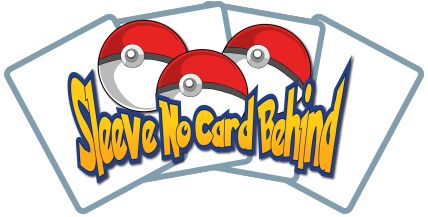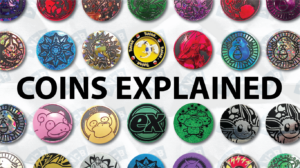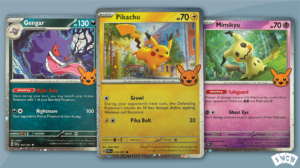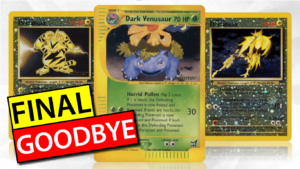How to Choose Your Format in Magic: The Gathering
-
By: Oliver Copeland
- Published:
- Last Updated: February 4, 2024
If you’re new to Magic: The Gathering, you may be wondering what all the fuss is about “formats.” In short, a format is a way to play the game with specific rules, card pools, and banned/restricted lists. There are many different formats, each with its own unique flavor and style of play. This article will help you understand the different formats of Magic: The Gathering and when they are most commonly used. No matter your skill level or preference, there’s a Magic: The Gathering format for you. So dive in and start exploring!
Standard
The Standard format is one of the most common ways to play Magic: The Gathering, and for good reason! Standard is a great way to experience the newest cards and sets while still being able to play with some older cards that you may already have. Each player uses a minimum 60-card deck and starts with 20 life. Your deck can only contain up to four copies of any one non-basic land card.
However, Standard has a much more volatile “metagame” (what decks are the strongest in the format and what you play against them) than other formats. You can’t be sure that your deck will still be viable after new sets are released. This is thanks to the fact that some older cards become no longer legally playable, or “rotate out,” once a year to make room for newer cards.
If you’re looking to get into Magic: The Gathering, or are just looking for a change of pace from other formats, Standard is definitely the way to go; especially for players getting into Magic: The Gathering through the online platform of Arena!
Historic
Historic is a non-rotating format in Magic: The Gathering that allows expansion sets and core sets from Ixalan and onwards to be used. It was introduced on Arena on September 26, 2019 and is only playable on this platform. It was once playable with physical cards as well, and still technically is, but with the advent of Alchemy cards on Arena, it has become even more of an Arena-only format.
The Historic format is not supported by Magic: The Gathering Online.
Qualifying events for the Historic format are:
-Individual Historic matches played through the Direct Challenge system
-Best-of-three matches played in the Historic queues
-Tournaments that offer a Historic format option
Banned and Restricted list
The following cards are banned in Historic:
- Agent of Treachery
- Brainstorm
- Channel
- Counterspell
- Dark Ritual
- Demonic Tutor
- Field of the Dead
- Lightning Bolt
- Memory Lapse
- Natural Order
- Nexus of Fate
- Oko, Thief of Crowns
- Omnath, Locus of Creation
- Once Upon a Time
- Swords to Plowshares
- Thassa’s Oracle
- Tibalt’s Trickery
- Time Warp
- Uro, Titan of Nature’s Wrath
- Veil of Summer
- Wilderness Reclamation
- Winota, Joiner of Forces

Pioneer and Explorer
Pioneer is a newer Magic: The Gathering format that combines the best of both Standard and Modern. It features cards from Return to Ravnica block all the way up through the most current set.
There is also a digital-only format called Explorer that uses the same list of legal sets as Pioneer. However, this only applies if these cards have been released in a new digital set on Arena. It seems Wizards of the Coast has no intention of adding older sets to Arena.
Explorer has a slightly different ban list from Pioneer but is generally considered a subset of Pioneer as a format. Despite being a digital-only format, it is set up such that players can play it “in paper” as any of the cards changed on Arena after their release (called Alchemy cards) are not legal in the format. However, due to the complexity of remembering exactly which cards from certain sets are legal in the format, it is really only played online.
Pioneer is a great format for players who want to experience the power and depth of Modern without having to invest in a huge collection of expensive cards. It’s also perfect for Standard players who are looking for a new challenge.
Pioneer is a non-rotating format, which means that the card pool will never change the way Standard does, with cards eventually leaving the format due to new cards being printed. This makes it easy to build up a collection and play the same deck for years to come.
If you’re looking for a format that offers something new and exciting, Pioneer is a perfect choice! The Pioneer format consists of all cards printed in the Return to Ravnica block and after, all the way up to today.
The Pioneer ban list is as follows:
- Balustrade Spy
- Bloodstained Mire
- Expressive Iteration
- Felidar Guardian
- Field of the Dead
- Flooded Strand
- Inverter of Truth
- Kethis, the Hidden Hand
- Leyline of Abundance
- Lurrus of the Dream-Den
- Nexus of Fate
- Oko, Thief of Crowns
- Once Upon a Time
- Polluted Delta
- Smuggler’s Copter
- Teferi, Time Raveler
- Undercity Informer
- Underworld Breach
- Uro, Titan of Nature’s Wrath
- Veil of Summer
- Walking Ballista
- Wilderness Reclamation
- Windswept Heath
- Winota, Joiner of Forces
- Wooded Foothills

Modern
Modern is a Magic: The Gathering format that was created in 2011, replacing the Extended format. It is a non-rotating format that allows cards from the 8th edition core set and all expansions printed afterward.
The Modern format is designed to be a fun, competitive environment full of powerful cards without some of the more oppressive aspects of Legacy or Vintage. Like Standard, Modern uses minimum 60-card decks and a starting life total of 20.
Modern is not playable on Arena but is played digitally on Magic: The Gathering Online.
Cards currently banned in Modern are:
- Ancient Den
- Arcum’s Astrolabe
- Birthing Pod
- Blazing Shoal
- Bridge From Below
- Chrome Mox
- Cloudpost
- Dark Depths
- Deathrite Shaman
- Dig Through Time
- Dread Return
- Eye of Ugin
- Faithless Looting
- Field of the Dead
- Gitaxian Probe
- Glimpse of Nature
- Golgari Grave-Troll
- Great Furnace
- Green Sun’s Zenith
- Hogaak, Arisen Necropolis
- Hypergenesis
- Krark-Clan Ironworks
- Lurrus of the Dream-Den
- Mental Misstep
- Mox Opal
- Mycosynth Lattice
- Mystic Sanctuary
- Oko, Thief of Crowns
- Once Upon a Time
- Ponder
- Preordain
- Punishing Fire
- Rite of Flame
- Seat of the Synod
- Second Sunrise
- Seething Song
- Sensei’s Divining Top
- Simian Spirit Guide
- Skullclamp
- Splinter Twin
- Summer Bloom
- Tibalt’s Trickery
- Treasure Cruise
- Tree of Tales
- Umezawa’s Jitte
- Uro, Titan of Nature’s Wrath
- Vault of Whispers

Legacy
Legacy is a format that centers around having access to nearly every card ever printed in Magic: The Gathering. It has shrunk in popularity over the years due to the high cost of entry. Cards that are played heavily in Legacy tend to be older and very powerful, meaning they command a high price on the secondary market.
Additionally, since your deck is built using the same rules as Standard, that means you can end up needing to buy 4 copies of these cards.
Legacy decks tend to be extremely powerful and can be difficult to play optimally or even properly. This is due to the density of “combo decks” in which you try to set up an infinitely repeatable loop of card effects that depletes your opponent’s life total.
This aspect of the format is a draw for those who want to flex their skills and show how skilled they are at playing Magic: The Gathering. While not designed with newer players in mind, it can still be a fun format to play if you think you’re up to the challenge.
There are many fun and exciting card interactions that are only seen in this format, so give it a shot!
Legacy is not supported by Arena but is played digitally on Magic: The Gathering Online (MTGO).
The cards currently banned in Legacy are:
All cards of the “Conspiracy” subtype (25 cards in total)
All cards using the “ante” rules (9 cards in total)
A group of cards whose art, text, name, or combination thereof are racially or culturally offensive are banned in all formats. (Currently 7 cards, but the list has been declared a work in progress.)
- Ancestral Recall
- Arcum’s Astrolabe
- Balance
- Bazaar of Baghdad
- Black Lotus
- Channel
- Chaos Orb
- Deathrite Shaman
- Demonic Consultation
- Demonic Tutor
- Dig Through Time
- Dreadhorde Arcanist
- Earthcraft
- Falling Star
- Fastbond
- Flash
- Frantic Search
- Gitaxian Probe
- Goblin Recruiter
- Gush
- Hermit Druid
- Imperial Seal
- Library of Alexandria
- Lurrus of the Dream-Den
- Mana Crypt
- Mana Drain
- Mana Vault
- Memory Jar
- Mental Misstep
- Mind Twist
- Mind’s Desire
- Mishra’s Workshop
- Mox Emerald
- Mox Jet
- Mox Pearl
- Mox Ruby
- Mox Sapphire
- Mystical Tutor
- Necropotence
- Oath of Druids
- Oko, Thief of Crowns
- Ragavan, Nimble Pilferer
- Sensei’s Divining Top
- Shahrazad
- Skullclamp
- Sol Ring
- Strip Mine
- Survival of the Fittest
- Time Vault
- Time Walk
- Timetwister
- Tinker
- Tolarian Academy
- Treasure Cruise
- Underworld Breach
- Vampiric Tutor
- Wheel of Fortune
- Windfall
- Wrenn and Six
- Yawgmoth’s Bargain
- Yawgmoth’s Will
- Zirda, the Dawnwaker

Vintage
Vintage is very similar to Legacy in that decks are even more powerful and expensive due to the “Power 9”. The 9 most powerful cards ever printed are “restricted” rather than banned in the format.
What this means is that you can play exactly one copy of each restricted card in your deck. Furthermore, this effectively means that every deck in Vintage plays one copy of each of the Power 9 cards.
In addition to being the most powerful cards ever printed, they are also generally among the most expensive and difficult to obtain. The only cards banned in Vintage are the Conspiracy, ante and offensive cards mentioned above as well as these three cards:
- Chaos Orb
- Falling Star
- Shahrazad
The cards restricted in Vintage are:
- Ancestral Recall
- Balance
- Black Lotus
- Brainstorm
- Chalice of the Void
- Channel
- Demonic Consultation
- Demonic Tutor
- Dig Through Time
- Flash
- Gitaxian Probe
- Golgari Grave-Troll
- Gush
- Imperial Seal
- Karn, the Great Creator
- Library of Alexandria
- Lion’s Eye Diamond
- Lodestone Golem
- Lotus Petal
- Mana Crypt
- Mana Vault
- Memory Jar
- Mental Misstep
- Merchant Scroll
- Mind’s Desire
- Monastery Mentor
- Mox Emerald
- Mox Jet
- Mox Pearl
- Mox Ruby
- Mox Sapphire
- Mystic Forge
- Mystical Tutor
- Narset, Parter of Veils
- Necropotence
- Ponder
- Sol Ring
- Strip Mine
- Thorn of Amethyst
- Time Vault
- Time Walk
- Timetwister
- Tinker
- Tolarian Academy
- Treasure Cruise
- Trinisphere
- Vampiric Tutor
- Wheel of Fortune
- Windfall
- Yawgmoth’s Will
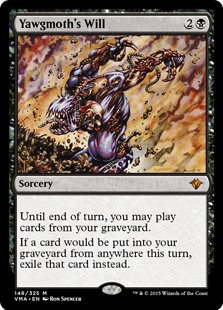
Brawl
Brawl is a Magic: The Gathering format that is a combination of Standard and Commander. Brawl is played with only cards that are legal in the Standard format. This means that you can only use cards from the most recent sets as well as any reprinted cards from those sets.
Each player starts the game with 30 life instead of 20. Like Commander, Brawl decks are what’s called “singleton decks” which means that your deck can only contain one copy of any non-basic land card.
These decks also utilize a “commander”. A commander is a creature that defines the colors you can play in your deck and often dictates your strategy.
If you’re looking for a Magic: The Gathering format that’s a little bit different from Standard, then Brawl is definitely worth checking out!
Brawl is playable on Arena but is not available on Magic: The Gathering Online (MTGO).
Commander
If you’re looking for a Magic: The Gathering format that’s both challenging and fun, look no further than Commander.
Commander is currently the most played format in Magic: The Gathering due to its variability and accessibility to players at all skill levels.
In this unique format, each player starts the game by choosing their own “commander” creature card. This card stays in their “command zone” rather than being shuffled into their deck with the rest of their cards.
This creature is required to be legendary and its “color identity” (all the different colored mana symbols that appear anywhere on the card) defines what colors of cards you can play in your deck.
This means you can’t play green cards with a commander that only has black and red mana symbols. Flavorfully, this creature is considered the leader of your deck and dictates many aspects of your deck.
Commander games are usually played with four players, but can also be played with two or three, or even more if you’re willing to play a long game!
One of the things that makes Commander so great is the huge variety of viable strategies, such as board wipes.
Played with 40 life and with an exactly 100-card, singleton deck (including your commander), there are countless ways to build a deck, and no two games will ever play out the same way. Whether you’re looking to go all-in on an aggressive strategy or try to control the game with powerful spells, there’s a commander out there for you.
If you’re ready to jump into the world of Commander, head over to your local game store to buy a preconstructed deck or check out online resources like EDHREC.com.
You’ll need at least one other friend who’s interested in playing, and from there you can start building your decks and planning for battle!
Commander is not supported by Arena but is playable on Magic: The Gathering Online (MTGO).
Draft
One of the most popular ways to play Magic: The Gathering, and one that’s often part of high-level tournaments, is through the Draft format. In Draft, each player opens one of three booster packs and picks one card at a time to add to their deck. The pack is then passed to the player on your left or right.
This continues until all the cards in the pack are gone. After all three packs have been drafted, each player builds a minimum 40 card deck using the cards they drafted plus basic lands provided for everyone.
Drafts can be played with as few as three players, but are usually played with “pods” of eight players. The most common Draft format is booster draft, in which each player brings, or purchases, unopened booster packs to the draft.
Players can also participate in online drafts, called “cube drafts.” In a cube draft, players draft cards from a pre-selected pool of cards, called a “cube.” Cube drafting is a popular way to play Magic with friends who live far away, as it can be done entirely online. This format is particularly popular on the Magic: The Gathering Online (MTGO) platform. Arena also offers conventional drafts online.
Sealed
Sealed is a format where players open six booster packs and build a minimum 40-card deck from the cards they opened and basic lands provided by the tournament organizer. No outside cards are allowed. This is a great format for players who don’t have access to a lot of cards or who are new to the game because it’s fairly easy to assemble a deck that can compete in this format.
Sealed is traditionally played at a type of event called a “pre-release” where players get access to a new set a week before its official retail release.
Pauper
Pauper is an odd format that started as a casual way to play invented by high-level or professional Magic: The Gathering players who wanted something simple to play in between rounds of high-level tournaments.
Wizards of the Coast has recognized the format as popular enough that it now has its own ban list, though you’re unlikely to see Pauper tournaments outside of your local game store.
Pauper, like many of the formats mentioned above, uses a minimum 60-card deck and 20 life.
However, in Pauper, you can only play cards that have been printed at the Common rarity. What this means is that decks tend to be fairly cheap to assemble and much less powerful than decks in other formats.
This allows players to have a little more fun with their deckbuilding and find ways to utilize the most under-recognized group of cards in Magic: The Gathering, since commons aren’t on most player’s minds outside of Draft and Sealed.
Pauper does have its own ban list of the following cards:
- Aarakocra Sneak
- Arcum’s Astrolabe
- Atog
- Bonder’s Ornament
- Chatterstorm
- Cloud of Faeries
- Cloudpost
- Cranial Plating
- Daze
- Disciple of the Vault
- Empty the Warrens
- Fall from Favor
- Frantic Search
- Galvanic Relay
- Gitaxian Probe
- Grapeshot
- Gush
- High Tide
- Hymn to Tourach
- Invigorate
- Mystic Sanctuary
- Peregrine Drake
- Prophetic Prism
- Sinkhole
- Sojourner’s Companion
- Stirring Bard
- Temporal Fissure
- Treasure Cruise
- Underdark Explorer
- Vicious Battlerager
- Sinkhole
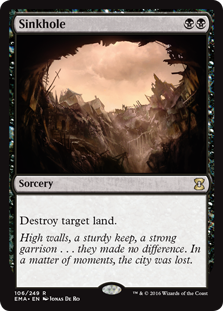
Final Thoughts
Now that you know the basics of the most popular Magic: The Gathering formats, which one will you choose to play? Each format has its own unique appeal, so it ultimately comes down to personal preference.
If you’re looking for a challenge, try out Legacy or Vintage. If you want to keep things simple, stick with Standard or Modern. And if you’re just starting out, consider giving Commander, or even Pauper a shot.
No matter which format you choose, have fun and enjoy the game!
